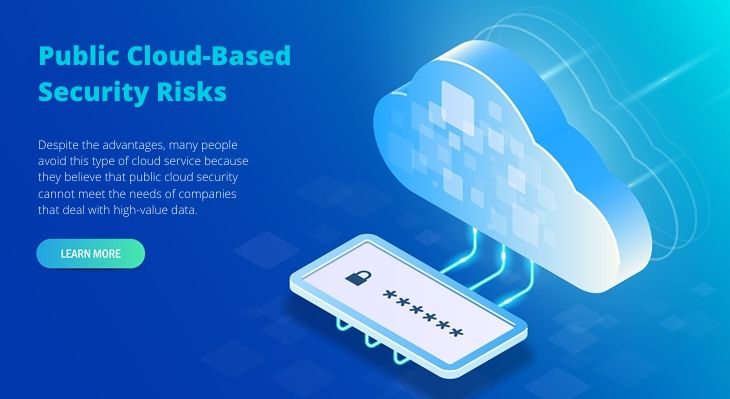Cloud computing in public environments is today one of the most popular cloud models on the market.
However, despite its advantages, many people avoid this type of cloud service because they believe that the public cloud cannot meet the security needs of companies that deal with high-value data.
The necessity for security can be well assumed by the statistics below:
- The Department of Homeland Security petitioned a budget of $2.6 billion for the financial year 2021 for its whole cybersecurity operations.
- The total expense of data breach amounted to around $3.92 million in 2019.
- The budget for cybersecurity of the U.S. for the year 2020 is $17.4 billion.
Let’s take a closer look at how the public cloud works and what makes it vulnerable.
A public cloud is based on the standard model of cloud computing in which a provider makes resources and tools, such as applications, spaces for storing data, and hosting websites and systems available to the general public.
In this type of model, the provider maintains the IT infrastructure and allocates its computing and storage resources to several customers simultaneously.
The public cloud provides services to multiple customers using the same shared infrastructure.
It is a fully virtualized environment with a multitenancy architecture, allowing users to share spaces, resources, and tools.
However, each user’s data and the system remain isolated from each other, with no interference between them.
An example of this method is iCloud or Google Drive – although these are primarily designed for personal use.
Despite the advantages, the main obstacle in the use of the public cloud is in relation to security risks. Many managers believe that businesses are more prone to data invasions and leaks in this shared environment.
Also Discover: Pros and Cons of Public Cloud
Due to the multitenancy nature of the public cloud, security is a constant concern for most companies that use it.
The host server, on which your own VM runs, also hosts VMs from other companies. Because of this, public cloud providers do not give you access to the hypervisor.
Therefore, you cannot install tools at the host level, such as an anti-virus or a backup agent. It also means that you cannot associate a hypervisor with an existing domain or cluster.
Consequences are also to be expected on the security end, as well as possible periods of service interruption, caused by cloud or WAN failures.
If the credentials allowing access to your cloud are not sufficiently secure and controlled, hackers may seize it and manage to connect to it.
As the space in the public cloud is shared, there are possible security risks to cloud computing users if the shared space is not well separated from other clients.
This could give an attacker the opportunity to endanger the accounts of other users as well. Hackers could also share space in the cloud and use it as a base of attack on neighbouring users.
Losing data can hurt a business because some information can be difficult or impossible to recover. Trying to recover that information can take a lot of time, money, and resources.
Another one of the risks that come with shared space in the public cloud is that even if one of the co-clients takes any unwarranted action then that can have an adverse impact on other clients as well.
Also Read: What is Cloud Bursting and why is it Important?
Minimal Understanding of the Back-end Process
The protection and confidentiality of data hosted by cloud providers remain the two main concerns of companies.
Third-party access to classified information generates a risk of endangering the critical data of the organization. The cloud user is accountable for application-level security.
The cloud provider is responsible for physical security and apparently for implementing external firewall policies.
When it comes to the public cloud, we usually don’t have any idea of how our data is being managed in the back-end.
Concluding Words
There are disadvantages in the public cloud, but they are mostly associated with the quality of the provider you hire than with the model itself.
It is recommended to research more about the differences and the best public cloud providers. This may be the easiest way to boost operation and facilitate administration while spending less and optimizing more.
You may also like to read: Cloud Security Standards You Need to Ensure

